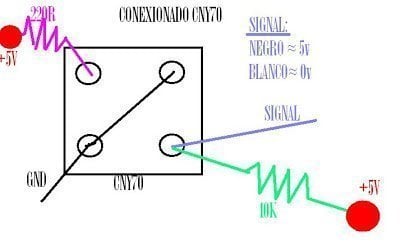Can a Photodiode be used as a Solar Cell? What is the real difference between Solar Panel and Photodiodes?
Very similar devices…
Physically, solar cells and photodiodes are based on the same principle:
Both are semiconductor devices that convert light into electrical energy
Both operating principle is based on the photoelectric effect, where photons hitting the semiconductor material provide enough energy to electrons to overcome the material’s bandgap, in the case of Silicon 1.12eV. When the electrons jump from the valence band to the conduction band, electron-hole pairs are created and an electric current is generated.

Essentially, they are both a PN-junction.
The PN-junction generates an electric field When the light creates an electric field that helps separate and drive the electron-hole pairs, facilitating the flow of current when the device is illuminated.

Instead of using electric current to cause electrons and holes to combine to create photons, photodiodes absorb light energy (photons) to generate electron-hole pairs, and so generate an electric current flow.
What are the differences?
Photodiodes are intended to be used as a sensors or receivers. To detect light.
Solar cells are made to generate electrical energy.
obviously, because of the different application purposes, they are slightly different…
Photodiodes are smaller in terms of active area. Solar panels are fabricated with a large active area in order to produce a significant amount of electrical energy.
Solar cells are fabricated based on silicon (Si). While photodiodes include various semiconductor materials in their construction, such as InGaAs, GaAs or Ge to respond better to different parts of the light spectrum. Each material has different properties in terms of cost, increased sensitivity, wavelenght range, noise levels and response speed.

Photodiodes have a faster response, due to the size of the active area, they are less capacitive. Photodiodes can detect small changes in light levels quickly and accurately. The capacitance is inversely proportional to the width of the formed depletion region. Solar cells are, generally, slower in response because their main goal is energy collection, not speed.
The response of photodiodes is more linear for low light conditions. The output current is a linear function of input light intensity. Photodiodes are designed to be sensitive to specific wavelengths of light, depending on the application.
The spectral response of photodiodes (quantum efficiency) can be band-limited. They are, often, designed and fabricated to be sensitive to specific wavelengths range. On the other side, solar cells are fabricated to perform with the widest spectral range possible. Normally, they are optimized to work under direct sunlight conditions. So, they can convert as much light energy as possible.
Solar panels generate an electrical current when exposed to light without any external bias. Photodiodes may need a voltage bias to operate correctly, although they can work also in “photovoltaic mode” for a more precision response.

The output of the photodiodes is used as a signal to feed another circuits such as amplifiers. Solar cells output is used to supply other circuits or to store the energy in batteries.
The energy efficiency per active area unit of the solar cells is commonly higher, because of the wider sensitive spectrum.
Solar cells are constructed as a combination of series and parallel cells, in arrays, while the photodiodes are built as a unique cell.
Photodiodes encapsulation is bigger and bulkier and can include any kind of wavelength filter. Solar cells are built with a larger packaging-active area ratio.


The I-V Characteristic Curve
There are 2 operating modes for solar cells and photodiodes:
- photovoltaic mode
- photoconductive mode or reverse bias
Referring to the current-voltage curve (I-V Curve), shown below:
Quadrant IV (photovoltaic mode)
Photodiodes operate without an external bias, generating voltage and current from light, similar to a solar cell. The current flows in the opposite direction to the applied voltage (which is zero or slightly positive). In this mode, the device generates power, although the photodiode may be used more typically as a sensor rather than a power source.
Quadrant III (photoconductive mode)
The photodiode is reverse-biased. The use of the photodiode is to detect light, where the generated current is proportional to the light intensity. This mode is common for applications like light sensing and optical communication.
Solar cells are not designed to operate on this quadrant.
Breakdown Voltage
Photodiodes must be operated below the breakdown voltage, or damage to the device may occur. The breakdown voltage threshold decreases with higher temperatures.

In summary, while both solar cells and photodiodes have the same principle of converting light into electrical energy, solar cells are designed for power generation, while photodiodes are specialized for light and signal detection.




